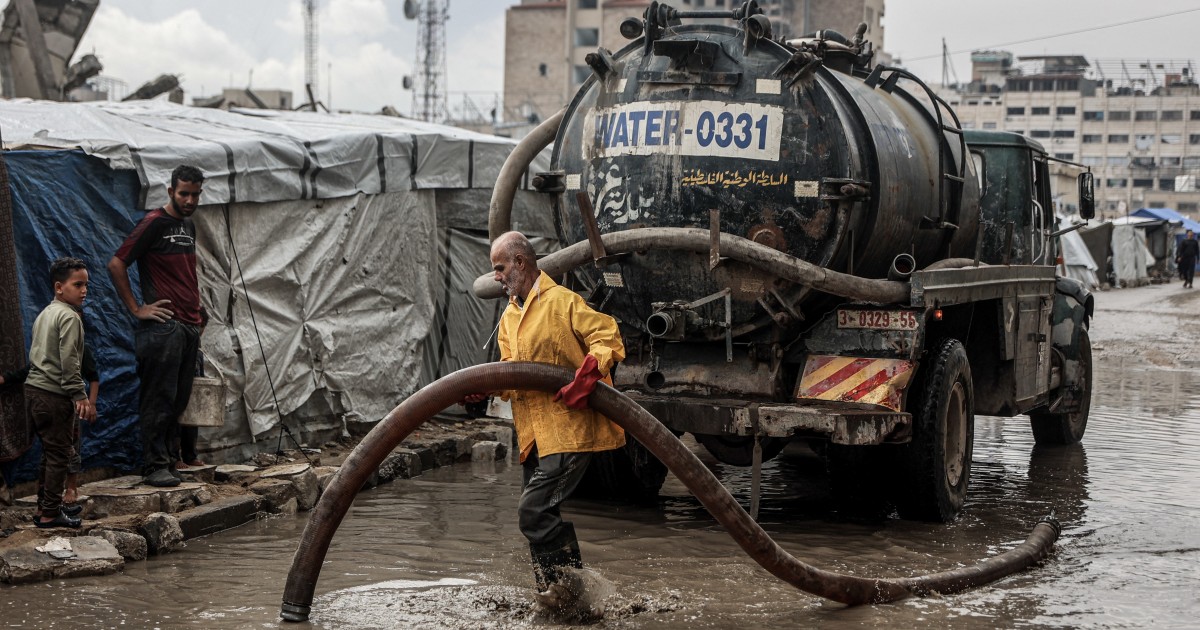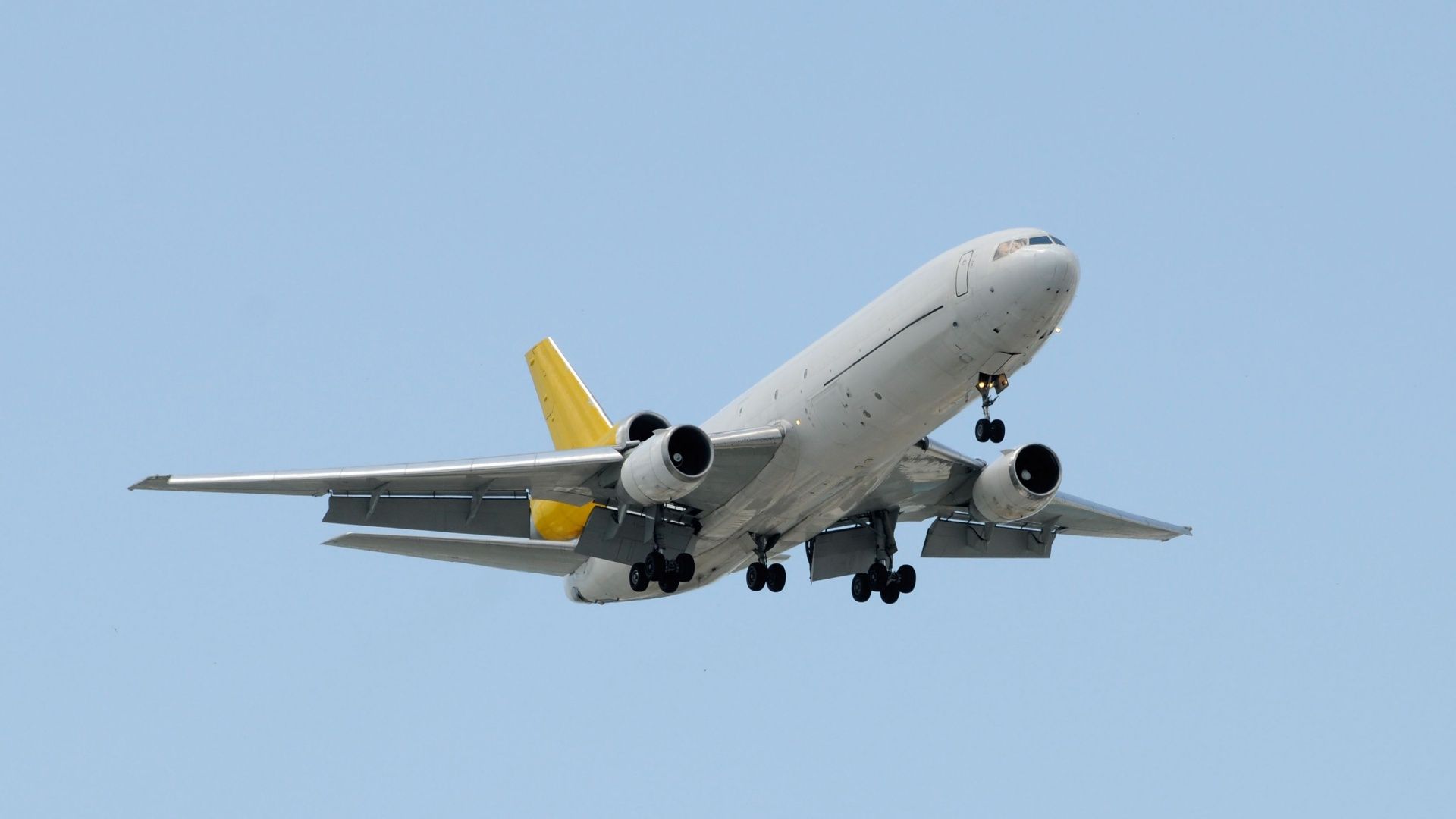Heavy rain inundated displacement camps across Gaza on March 2, 2024, worsening already dire conditions for families living in makeshift shelters. With roads transformed into rivers, many residents found themselves battling floodwaters that seeped into their tents, soaking their belongings and threatening their safety. This latest storm coincides with a drop in temperatures, intensifying humanitarian concerns for the Strip’s two million inhabitants.
In Gaza City, Sana Abu Harad, 38, expressed her despair as she pointed to her drenched child’s bedding on the muddy floor of their tent. “Everything is underwater,” she told NBC News. “Why must this little child sleep in floodwater? I struggled so much just to get this tent, and now nothing protects us. Where will I live with my children now?” Her plight reflects the struggles of countless families facing the elements without adequate shelter.
The situation has deteriorated further due to the collapse of essential water and sewage systems, severely impacted by two years of Israeli strikes that have devastated critical infrastructure. As a result, hundreds of thousands of people are crammed into areas lacking basic sanitation facilities. According to the IOM (International Organization for Migration), over 1.5 million people in Gaza urgently require emergency shelter assistance.
On Saturday, Mahmoud Basal, spokesperson for Gaza’s Civil Defense agency, declared that the region is experiencing a “true catastrophe” due to the severe weather. He stated, “The mixing of rainwater with sewage has caused an environmental disaster and will lead to health catastrophes.” Basal emphasized that the destruction of the sewage and drainage systems has heightened the risks faced by displaced residents.
The humanitarian crisis is further complicated by ongoing restrictions on aid. The United Nations reported last week that Israel has rejected more than 100 requests for the entry of essential relief materials, including winter clothing, blankets, and sanitation supplies. Farhan Haq, Deputy U.N. Spokesperson, noted that such limitations are obstructing humanitarian efforts in the region.
Despite these challenges, COGAT, the Israeli body responsible for coordinating humanitarian aid, stated on X that “hundreds of trucks carrying food, water, fuel, gas, medicines, medical equipment, tents, and shelter supplies enter the Gaza Strip every day.” Yet, the continuous flow of aid remains insufficient to meet the overwhelming needs of the population.
International attention is also focused on broader geopolitical tensions. The U.N. Security Council is set to vote on a U.S. proposal for a mandate authorizing an international stabilization force in Gaza. This proposal has faced opposition from Russia, China, and several Arab nations. Internal Israeli tensions have escalated following a joint statement supporting the resolution, which referenced the peace process as a pathway to Palestinian self-determination and statehood.
This statement has provoked strong reactions from members of Prime Minister Benjamin Netanyahu‘s Cabinet, particularly from far-right ministers Itamar Ben-Gvir and Bezalel Smotrich. Both have urged Netanyahu to firmly reject any notion of a Palestinian state. In a post on X, Ben-Gvir insisted that Israel “will not allow the establishment of a Palestinian state in any form,” while Smotrich echoed the sentiment, stating that Netanyahu must clarify to the international community that no such state will ever exist.
Netanyahu, reliant on the support of ultranationalists to maintain his governing majority, reaffirmed at a government meeting on Sunday that Israel’s stance against a “Palestinian state in any territory has not changed.” He emphasized his intent to resist external pressures, stating, “I don’t need reinforcements and tweets and lectures from anyone.”
As the crisis deepens, the deployment of an international security force remains a significant hurdle in advancing negotiations for a prolonged ceasefire, the disarmament of Hamas, and the return of Israeli hostages still held in Gaza. With the infrastructure in ruins and continuous rainfall exacerbating the living conditions, displaced residents are left to navigate a precarious existence.
One resident, Ma’in Albuhteiti, 50, described the harrowing experience of living in a tent with his seven children. He recounted being awakened at 3 a.m. by the rain pouring into their living space. “Look at the bedding, the furniture, and the state of things,” he said. “We were completely flooded, we couldn’t move. If there were proper shelter for us, we would go; we cannot manage. The situation is extremely tragic, and all the rain is pouring on us.”
As the humanitarian crisis unfolds amid political tensions, residents of Gaza continue to hope for improvements in their living conditions, even as they face relentless challenges.







